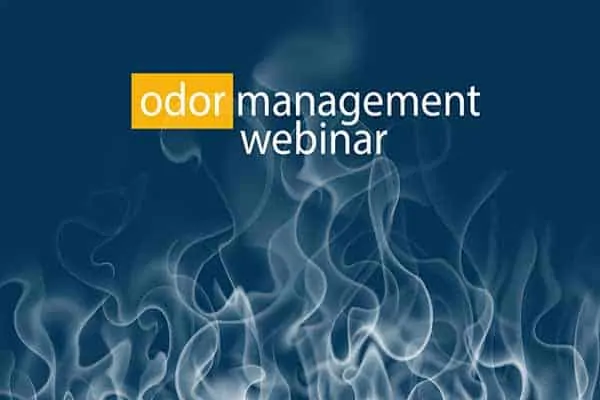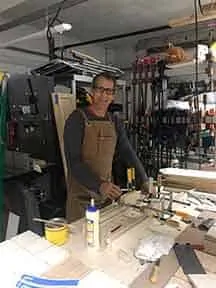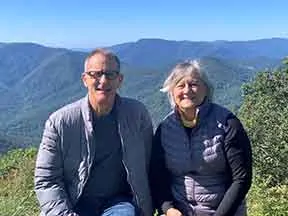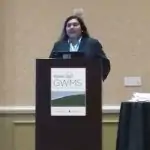


Register for SCS Engineers’ January webinar to learn more about the proactive strategies and practices you can implement at your critical solid waste facilities. This free webinar will help you develop capabilities to assess the potential for odor issues and, by doing so, set realistic benchmarks toward cost-effective and meaningful mitigation measures.
DATE: Thursday, January 21, 2021 TIME: 2 p.m. ET
Our panelists bring comprehensive expertise to the table, including facility design and planning, technical experience in air quality compliance and pollutant dispersion and air measurement programs, atmospheric dispersion and transport of airborne pollutants, particularly in the area of complex terrain. They will provide decades of strategies, resources, and best practices and technologies based on successful solutions that help support your facility as you prepare for, and likely will, experience odor complaints.
The team answers questions throughout the presentation, and the second portion of the program is devoted to Q&A and idea exchange.
State regulatory agencies normally require landfill slopes reaching final grades to close within a certain period. This requirement leads to closing landfill slopes in phases, normally referred to as partial closure. Generally, partial closures start from the bottom of the landfill slope up to a certain elevation, with geosynthetics in the final cover temporarily anchored along the partial closure’s sides and upper boundary. Engineers propose different designs for securing the lower boundary of partial closures at the bottom of the landfill slope. Some engineers propose an anchor trench outside the bottom lining system anchor trench to secure the final cover geosynthetics. Others specify welding the cover geomembrane to the bottom lining system geomembrane.
Experience with anchor trenches at the bottom of the landfill slope for the final cover geosynthetics has not been positive because of these issues:
To eliminate the issues above, engineers weld the final cover geomembrane to the bottom lining system geomembrane for cases when there is a bottom lining system below the waste. The welding completely seals the landfill interior space from the outside environment and keeps regulated materials, such as waste, leachate, and gas, within the sealed system. Of course, the engineer should design proper means to address these behind the sealed system; designs may include:
Leachate toe drain system is a concept originally developed by SCS and incorporated into landfill final cover designs over the past 20 years. Unfortunately, many solid waste engineers are unaware of the need for LTDS, so their designs lack this important feature. LTDS saves a tremendous amount of repair money in the long run by avoiding complications for landfill operators.
A rainwater toe drain system removes water that moves laterally within the final cover geocomposite toward the slope’s bottom. The RTDS includes a perforated HDPE pipe encased in gravel and wrapped in geotextile. Also, install the RTDS on terraces along the depression on the interior side of the terrace. Along the landfill slope’s bottom, position the RTDS behind a HDPE flap welded to the final cover geomembrane. The RTDS is sloping with high and low points along the RTDS alignment. Lateral drain pipes located at low points remove water from the RTDS to the perimeter ditches.
Other designs involving extending the geocomposite to daylight at the slope surface cause problem such as those listed below:
Similar issues can also occur at the outlet of such systems on landfill terraces, making the RTDS a superior design.
About the Author:

On November 30, 2020, the Environmental Protection Agency announced it is aggressively addressing per- and polyfluoroalkyl substances (PFAS) in the environment. The agency announced two steps that it states would help ensure that federally enforceable wastewater monitoring for PFAS can begin as soon as validated analytical methods are finalized.
First, EPA issued a memorandum detailing an interim National Pollutant Discharge Elimination System (NPDES) permitting strategy for addressing PFAS in EPA-issued wastewater permits.
EPA’s interim NPDES permitting strategy for PFAS advises EPA permit writers to consider including PFAS monitoring at facilities where these chemicals are expected to be present in wastewater discharges, including from municipal separate storm sewer systems and industrial stormwater permits. The PFAS that could be considered for monitoring will have validated EPA analytical methods for wastewater testing. The agency anticipates being available on a phased-in schedule as multi-lab validated wastewater analytical methods are finalized. The agency’s interim strategy encourages the use of best management practices where appropriate to control or abate the discharge of PFAS and includes recommendations to facilitate information sharing to foster adoption of best practices across states and localities.
Second, EPA released information on progress in developing new analytical methods to test for PFAS compounds in wastewater and other environmental media.
In coordination with the interim NPDES permitting strategy, EPA is developing analytical methods in collaboration with the U.S. Department of Defense to test for PFAS in wastewater and other environmental media, such as soils. The agency is releasing a list of 40 PFAS chemicals that are the subject of analytical method development. This method would be in addition to Method 533 and Method 537.1 that are already approved and can measure 29 PFAS chemicals in drinking water. EPA anticipates that multi-lab validated testing for PFAS will be finalized in 2021. For more information on testing method validation, see https://www.epa.gov/cwa-methods.
EPA continues to expand its PFAS Action Plan to protect the environment and human health. To date, it has assisted more than 30 states in helping address PFAS, and the agency is continuing to build on this support. Across the nation, the EPA has addressed PFAS using a variety of enforcement tools under SDWA, TSCA, RCRA, and CERCLA (where appropriate), and will continue to protect public health and the environment.
The agency is also validating analytical methods for surface water, groundwater, wastewater, soils, sediments, and biosolids; developing new methods to test for PFAS in air and emissions; and improving laboratory methods to discover unknown PFAS. EPA is developing exposure models to understand how PFAS moves through the environment to impact people and ecosystems.
Related Information
This blog references information issued from the US EPA, Office of Public Engagement.
It is not out of the ordinary to see several different landfill designers providing services at a specific site over many years. Each landfill designer brings his/her preferences and designs to the owner, depending on the urgency of the projects and the owner’s willingness to accept new concepts.
Experienced landfill designers review the prior history of design work at the facility and ensure that their new design work is compatible with previously developed cells and final covers. Lack of such due diligence could impede landfilling operations following implementation of the design with implications that may survive for many years to come at a high cost to the owner.
Proper due diligence may reveal issues that the owner may not be aware of. In such cases, the new landfill engineer attempts to explain the observed issues from a previous design to the owner’s attention during one or more meetings or through a narrative report including documentation of the issues and measures to address each issue. The owner may accept or reject the technical matters brought to their attention by the new landfill designer. If accepted, authorize the new design engineer to prepare proper plans and details, and assist in retaining a contractor to fix noted problems. If rejected, the new landfill engineer can feel confident he/she is professionally conducting himself/herself considering the ethical obligations in his/her profession.
If the new landfill engineer had not brought up issues discovered during the due diligence, the owner could blame the new designer claiming that he/she should have known better. Such situations do not get resolved easily and could lead to another change in the design team.
The cost of performing thorough due diligence may not be in the first task order’s budget. However, it will certainly pay off over time with back-to-back task orders from the owner when confidence n the designer’s capabilities build over time.
Changes to the landfill personnel may occur similar to any other organization. Landfill general managers, operation managers, site engineers, or compliance engineers may leave, and the position filled by a new person who has no site familiarity or history. These types of rotations can provide the opportunity for inexperienced landfill designers to influence the site’s long-term plans. Mistakes by inexperienced designers can last decades in some instances, while new and remaining personnel must deal with the consequences.
SCS’s project management protocols require project managers to constantly learn about the site’s history and review documents representing the backbone of the facility development over the long-term life of the site to the present. This type of continual learning of important matters and minute nuances of the site history equips a project manager to address technical and permitting issues based on knowledge of prior work performed at the facility. Implementation of new ideas based on prior knowledge of the site history is considered the backbone of properly managing projects and serving the client in consideration of their business priorities.
Past knowledge comes from documents prepared by prior designers and knowledge of site personnel who have been working at the site for a long time. Competent engineers welcome opportunities to interview and discuss site history, especially with long-term site personnel. The knowledge these people carry with them is not found in any document that the designer, if lucky enough to get his/her hands-on, may obtain by review. The knowledge of the changes to existing systems during original construction and a later date, which may not have been documented, can lead the engineer to concepts that otherwise would not have been envisioned without the long-term employee’s information of the site.
About the Author:

So the last ten months have been different, to say the least. As many of you know, normally I’m traveling somewhere every week. Such has not been the case since February/March when I last traveled to San Diego and Reston. I’ve only traveled by car to two places since the pandemic began. I have not worked in an office since February. Within one week of all the shelter in place orders issued in California, SCS Engineers transitioned its entire office workforce to working from home. Our Field Staff and other essential workers continue performing services outside of the office and with PPE and social distancing.
I have never really perceived the stress of traveling all the time, but being home has been relaxing and therapeutic in a way. I eat lunch almost every day with Carole, my wife. We often watch something educational during lunch or just talk. I’ve been able to watch the sunrise almost every day. I observe the daily ebb and flow of life from my “home office,” which faces the front of my house. From there, I keep tabs on all things solid waste throughout SCS and the country. I watch my neighbors walk their dogs and stroll together, and the hordes of kids on their bicycles flying around the neighborhood.
I have walked almost 3 miles every day for the last six months, enjoying the morning solitude, quietness, and seasons’ changing. I’ve watched all kinds of YouTube videos, mostly woodworking, and taught myself how to use Fusion 360.which is a 3D AutoCad program from AutoDesk.

Since the beginning of the pandemic, I’ve spent a lot of time after work and on weekends in my woodshop. I’ve thoroughly enjoyed this diversion. I’ve designed and built several fairly ambitious projects, the biggest ones being a set of workshop cabinets (tops and bottoms) with 20 drawers, cabinets for my daughter and son-in-law, a large mobile workbench for my woodshop, a bunk bed for my grandkids, and a new desk that I’m finishing now. I’ve learned that Amazon is a dangerous thing because it makes it way too easy to buy new tools and gadgets to support my woodworking habit. I’ve had fun talking with other SCSers and clients who share a passion for woodworking as well.
We were fortunate to have my daughter Christine, her husband Chris, and three of my grandchildren (Frankie, Robert, and George) with us this summer for nearly a month, which was fun and chaotic. We miss our West Coast contingent, Paul (my son), Lindsay (daughter-in-law), Austin, and Julia (our two other grandchildren). They moved to Bellevue, Washington, right at the beginning of the pandemic, where my son took a job with Amazon as an optical-mechanical engineer. Since March, we haven’t seen them in person; however, we do FaceTime with them almost every day.
I’ve learned to wear a mask, keep six feet of separation, use Microsoft Teams, Zoom, Google Talk, LifeSize, and Webex. We continue to keep work, family, and friends together using these tools, which has been good.

This whole situation does wear on me from time to time, but I keep telling myself, this is just like walking those three miles each day, one foot after the other. There are so many people struggling now; my situation is blessed. My family, SCS, and my friends are doing everything we can to ease their burden. Hopefully, the end of this pandemic is in sight. Until then, we find ways to manage, help others, and stepping out of our normal routines helps us grow.
Merry Christmas,
Bob Gardner, Sr. VP SCS Engineers
SCS Engineers’ SCSeTools® platform and applications help facilities and companies operate more efficiently by continually gauging operational health and identify trends critical to operations and the environment.
SCS Technology Services®, the technology development practice within SCS Engineers, announces a new application for tracking and analyzing environmental data. The application expands the firm’s SCSeTools® platform, demonstrating its commitment to developing the most advanced data-driven technology in the environmental services industry.
Groundwater monitoring and compliance services are long-term and expensive responsibilities that generate enormous amounts of monitoring and laboratory data. SCS Groundwater™ is a tool to monitor and manage the data associated with operations and reporting requirements for various sites. Sites include active or closed landfills, plants, and impact sites such as former dry cleaners or industrial facilities.
The application also monitors and manages data effectively for clean groundwater applications such as groundwater basin management projects consistent with standard protocol under state and federal environmental compliance rules. SCS Groundwater™ collects and efficiently organizes groundwater monitoring and maintenance data providing those responsible for environmental compliance with a reliable, consistent, and cost-effective way to manage the large volume of information.
The application’s primary value is enabling users to set up a detailed monitoring plan for any number of events, including the sampling points to include and what analyses to perform at each point. Once the information upload is finished, the application checks incoming data against the plan to confirm all work is complete.
SCS Groundwater™ generates reporting components such as data tables, charts, graphs, and maps for compliance, reporting, and finding trends. For example, on a brownfield site, the compliance manager could upload historical monitoring data results, view the data trends over time, and then produce report tables and figures. Operators can also use the data in other applications for additional analysis or visualization.
SCS Engineers’ environmental solutions and technology directly result from our experience and dedication to industries responsible for safeguarding the environment as they deliver services and products. For information about SCS, visit the SCS eTools pages or enjoy our 50th Anniversary video to see the technology in action.
The SCSeTools® platform and applications help facilities operate more efficiently by continually gauging operational health and spot trends that help determine when and how to invest in infrastructure. Field staff, environmental compliance experts, brownfields, developers, and clients in the waste industry guide the technology designs. For additional information and demonstrations of these productivity-enhancing tools, please contact .
The events of 2020 have affected the economy, the way we conduct business, and even our social interactions. Now, more than ever, streamlining costs is key for public and private sector clients across the country. Enter groundwater monitoring projects.
Often overlooked as an opportunity to reduce costs, it’s an excellent place to start when examining the costly operational processes of a solid waste facility. Groundwater monitoring is often thought of as necessary for compliance requirements and overlooked when considering ways to reduce spending. However, the proactive review of all monitoring projects may offer monitoring reduction or even cessation opportunities.
SCS Engineers has successfully employed these strategies at several Florida landfills. For instance, in Marion County, the SCS team worked to get a cessation in landfill gas and groundwater monitoring at the Martel Closed Landfill. Hired to conduct routine post-closure monitoring, the team observed obvious trends in the data that were favorable to the County. If you consider that monitoring costs average $10,000 to $50,000 per year, the potential cost savings over ten years is $100,000 to 500,000.
Bottom line: you should take the initiative to ask a few simple questions to see if further examination is warranted. What if contaminants are naturally occurring? Is the data in the technical reports supporting conclusions that include reduction or cessation when appropriate? Are you simply meeting the minimum requirements of the permit without an eye on the future?
About the Author: SCS Project Director David Atteberry puts his 20+ years of environmental consulting and management experience to work for his clients. His technical experience includes geologic and hydrogeologic investigations involving hazardous waste, solid waste, environmental, and water supply. Dave’s technical areas of expertise include contamination assessments, remediation, site characterization, aquifer characterization, RCRA compliance, waste characterization, environmental due diligence, reserve budgeting, and field sampling techniques.
SCS Groundwater™ collects and efficiently organizes groundwater monitoring and maintenance data providing those responsible for environmental compliance with a reliable, consistent, and cost-effective way to manage, view, and assess large volumes of information.
The application’s primary value is enabling users to set up a detailed monitoring plan for any number of events, including the sampling points to include and what analyses to perform at each point. Once the information upload is complete, the application checks incoming data against the plan to determine if all work is completed.
Efficient and consistent data collection means better quality control, fewer violations, and less costly operations. The application is a relational data management system specifically designed for groundwater management. Learn about more benefits here.
Across the industry, stakeholders agree the next few years will be critical in shaping how landfills deal with PFAS and how the public perceives it. Waste trade associations, scientists, and a host of organizations are in the midst of conducting a number of studies looking closely at the issue, PFAS treatment options, the positive impact of recycling, and regulatory policies.
While there are sites noted in the article, there’s no practical way for most companies and landfills to respond at this time responsibly. Additionally, landfills are unique; no two are alike. Most human exposure to PFAS occurs through contaminated food. The majority of landfill leachate is pre-treated at the landfill before going to a wastewater treatment plant, where additional treatment occurs before discharge.
According to EREF President Dr. Bryan Staley, in the article, “The relative impact of leachate as a human exposure pathway needs further evaluation to understand its relative degree of importance as it relates to health implications.”

Dr. Gomathy Radhakrishna Iyer, landfill leachate and design expert for SCS Engineers, said some operators are waiting to see what regulations may come even as they work on accounting for potential compliance issues and seeking solutions. “When the clients are thinking of upgrading their treatment plans, some are definitely taking into consideration PFAS treatment,” Radhakrishna Iyer said.
“You’re spending millions of dollars, you need to do your due diligence, right? At this point, consideration should be given to PFAS treatment during the feasibility stages,” she said.
SCS Engineers welcomes Project Manager Jeff Phillips to the Clive, Iowa office. Jeff works with a growing number of solid waste management clients interested in integrating sustainable materials management into their solid waste master plans. The practice is widely known as Integrated Solid Waste Management, ISWM.
Jeff Phillips comes to SCS with over two decades of designing and implementing ISWM programs. His expertise includes a comprehensive list of individual tasks and services, including facilitating strategic planning and consensus-building sessions, performing waste and recycling industry market analyses, developing and presenting comprehensive financial plans to solid waste agencies, identifying, authoring, and managing federal and state grants. He also designs, performs, manages waste characterization analyses, authors and produces videos for training and education purposes, and is involved in community outreach events for solid waste agencies, city councils, and the public.
“Jeff provides innovative approaches to develop and strengthen programs and operations in Iowa,” said Christine Collier, senior project manager. “He fits right into our SCS philosophy of ensuring client success.”
Jeff is an active member of the Solid Waste Association of North America and the Iowa Society of Solid Waste Operations, where he previously served on the Board of Directors and Conference Planning Committee. He earned a Bachelor of Arts, Geography, and Environmental Studies from the University of Iowa.
On Tuesday, November 10th, SCS Engineers announced the promotion of Sandra Ripplinger to Director of Health & Safety. Sandy will oversee all industrial health and safety guidance and training for the SCS employee-owners in her expanded role, reporting to the Board of Directors and Chief Financial Officer Curtis Jang.
Ms. Ripplinger is a Board Certified Industrial Hygienist (CIH) and Safety Professional (CSP) with three decades of experience providing occupational and environmental health and safety services. She is currently also a Project Director with SCS’s Environmental Health Services Practice in Henderson, Nevada.
Her experience includes providing industrial hygiene expertise for industrial facility health and safety audits, process safety management audits, training, environmental evaluations preventing worker exposure. “Sandy has done a great job strengthening our clients’ safety programs and evaluating the risks to prevent accidents,” said Curtis Jang. “She is a strong leader, and I’m confident she will guide our employees with ever-smarter Industrial Health and Safety (IHS) protocols.”
“I am looking forward to working with our team of business unit directors and IHS professionals, continuing to make improvements that benefit our staff and clients,” Ripplinger said. “Safety and industrial safety are an important part of people’s lives, and SCS is committed to continuing delivery of our services in line with legal compliance, industry guidelines, and our clients’ business needs.”